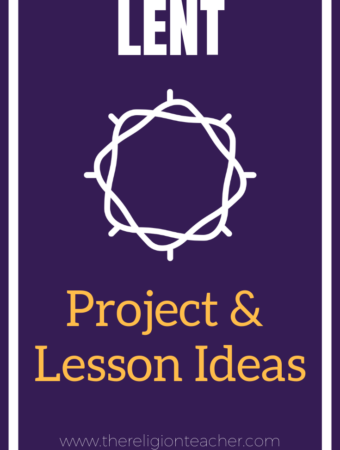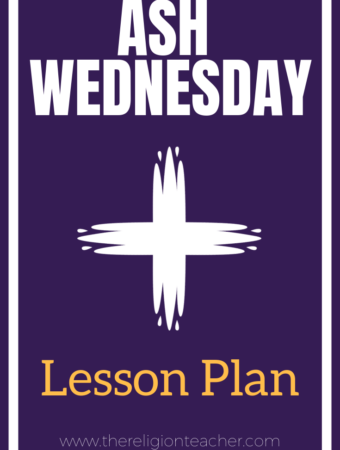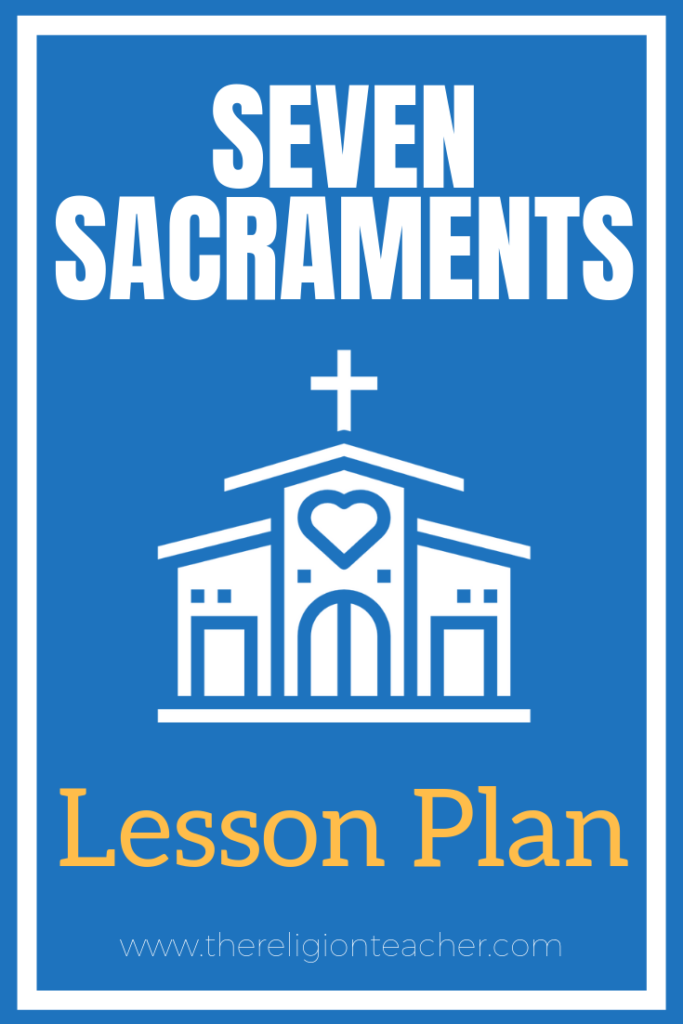
Using this lesson plan, you will be able to introduce your students to the Seven Sacraments of the Catholic Church and their significance in the lives of God’s people.
The lesson is meant to be an introduction and overview of the sacraments, but further lessons on each individual sacrament are encouraged with links provided below.
Seven Sacraments Lesson Objectives
- Students will be able to list the Seven Sacraments.
- Students will be able to connect the symbols to the sacraments.
- Students will be able to recall their experiences of the sacraments as either participants or observers.
- Students will feel excited to participate in the Seven Sacraments of the Catholic Church.
Seven Sacraments Lesson Activities
I. Opening Prayer: Anima Christi
To begin the lesson, invite your students to pray the Anima Christi together:
Soul of Christ, sanctify me.
Body of Christ, save me.
Blood of Christ, inebriate me.
Water from the side of Christ, wash me.
Passion of Christ, strengthen me.
O Good Jesus, hear me.
Within Thy wounds hide me.
Suffer me not to be separated from thee.
From the malignant enemy defend me.
In the hour of my death call me.
And bid me come unto Thee,
That with all Thy saints,
I may praise thee
Forever and ever.
Amen.
II. Hook
Try this lesson hook to introduce this Sacraments lesson to the students:
Have students fold a piece of paper in half three times. Unfold the paper and you will have eight boxes to use for this activity.
Have students label the paper in the first box in the upper left hand corner of the page: “The Seven Sacraments and Me.”
Then, have them label each of the remaining boxes as one of the Seven Sacraments:
- Baptism
- Confirmation
- Eucharist
- Reconciliation
- Anointing of the Sick
- Matrimony
- Holy Orders
Next, have them create fifty-second fast drawings. Give them ten seconds to remember a Baptism they witnesses (or possibly experienced if they went through the RCIA). Then give them fifty seconds to draw a picture of that memory. Repeat this process for each of the Seven Sacraments.
The goal here is to jog their memories of the sacraments so you have a foundation to build upon as you introduce them to the students. You may decide to come back to this paper later in the lesson and have the students draw what they know about the sacraments after the lesson.
Here is an example of what the paper will look like before they begin:
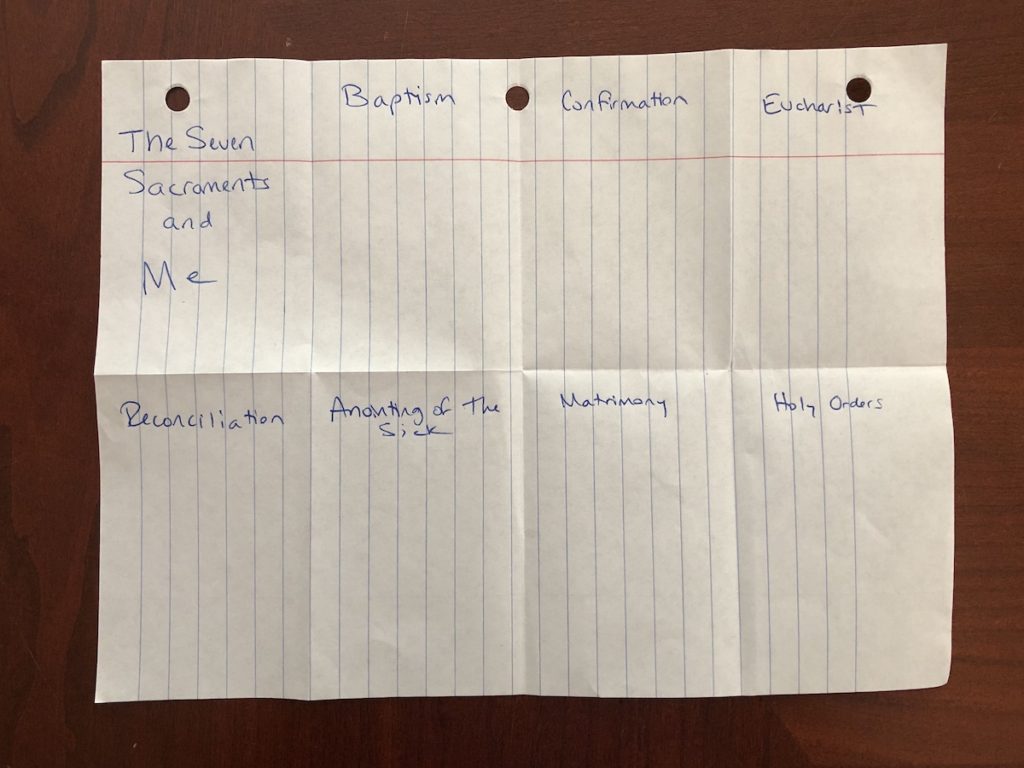
III. Presentation
Give your students a brief summary of the Seven Sacraments.
In this video, I share a short survey of the seven sacraments of the Catholic Church organized into three groups: Sacraments of Initiation, Sacraments of Healing, and Sacraments at the Service of Communion.
I found these three quotes from the Catechism of the Catholic Church to be particularly helpful in summarizing what each of the three groups of sacraments means:
The Sacraments of Initiation: Baptism, Confirmation, Eucharist
“The faithful are born anew by Baptism, strengthened by the sacrament of Confirmation, and receive in the Eucharist the food of eternal life. By means of these sacraments of Christian initiation, they thus receive in increasing measure the treasures of the divine life and advance toward the perfection of charity.” (CCC, 1212)
The Sacraments of Healing: Penance/Reconciliation, Anointing of the Sick
“The Lord Jesus Christ, physician of our souls and bodies, who forgave the sins of the paralytic and restored him to bodily health,3 has willed that his Church continue, in the power of the Holy Spirit, his work of healing and salvation, even among her own members. This is the purpose of the two sacraments of healing: the sacrament of Penance and the sacrament of Anointing of the Sick.” (CCC, 1421)
The Sacraments at the Service of Communion: Matrimony, Holy Orders
“Two other sacraments, Holy Orders and Matrimony, are directed towards the salvation of others; if they contribute as well to personal salvation, it is through service to others that they do so. They confer a particular mission in the Church and serve to build up the People of God.” (CCC, 1534)
I created this Seven Sacraments of the Catholic Church Graphic Organizer Worksheet to accompany this video:
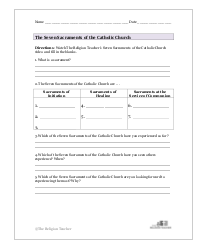
IV. Seven Sacraments Matching Game
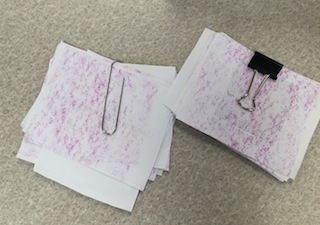
Have students create cards to play a Sacraments Matching Game. The game similar to “Memory” in that students will turn over cards and match the sacramental symbols and sacramental graces (effects) to one of the Seven Sacraments.
V. Seven Sacraments Stories
One of the best ways to help your students understand the meaning and significance of each of the sacraments in their lives is through the power of story.
Sacraments Testimonies
Share your story. Do you have stories to share about your experience of the Sacraments? Share these stories of grace with the students about each of the sacraments.
Do you know of friends or family members whose experience of the Seven Sacraments show how God works through them to touch the hearts of his people? Collect these stories. Share them yourself or ask someone you to to write down or record what their experience was like.
Sacraments Short Stories or Skits
Divide your class up into seven groups. Assign each group one of the Seven Sacraments.
Have them create stories about fictional people whose experience of one of the sacraments is transformational. For example, a group assigned with the Sacrament of Penance would create a story about a person who has committed a sin and is feeling ashamed about themselves. Someone invites them to go to confession. The person participates in the sacrament and emerges from the confessional feeling the mercy of God.
Have each group create a story for the sacrament that was assigned to them. Students may need more information about the sacrament assigned to their group. Provide additional reading for them to use such as the class textbook, the Catechism, or a reliable website. Provide them with a graphic organizers or have them answer these questions in a notebook:
- Why do people want to experience this sacrament?
- What happens during the sacrament?
- What are the physical signs of the invisible grace?
- How is a person changed after experiencing the sacrament?
After the groups are finished researching and writing their stories, they can read them to the class.
Optional: Instead of writing a story as a group, invite the students to create a skit instead. The group can act out the story in front of the class. It might help to have them write out each of the scenes first or storyboard them as a group so the full transformation that a person experience in the sacrament is clearly seen.
VI. Assessment
By the end of the lesson, your students should be able to list the Seven Sacraments and identify each one by its symbols or effects.
You can reuse the Sacraments Matching Game to observe your students ability to make these connections as a form of assessment.
You might also show each symbol in the front of the room and have the students hold up the cards with the name of the sacrament(s) that connect to that symbol. It might be hard to see from the front of the room, but the point is to have the students try their best and assess how well they are doing so far.
Seven Sacraments Lesson Plans
Here are a few lesson plans at The Religion Teacher about the sacraments:
- The Liturgy of the Word Lesson Plan
- The Liturgy of the Eucharist Lesson Plan
- The Last Supper Lesson Plan
- Rite of Confirmation Lesson Plan
- Post-Confirmation Lesson Plan
- Sacrament of Penance and Reconciliation Lesson Plan
Member Resources
Members of The Religion Teacher have access to many classroom videos to supplement their lessons including:
- Videos about the symbols and effects of each of the Seven Sacraments of the Catholic Church.
- The Religion Teacher’s Seven Sacraments Worksheets
- The Religion Teacher’s Catholic Mass Worksheets
- The Religion Teacher’s Confirmation Worksheets
Become a member of The Religion Teacher or login to access this and many other catechetical videos to use in class.

